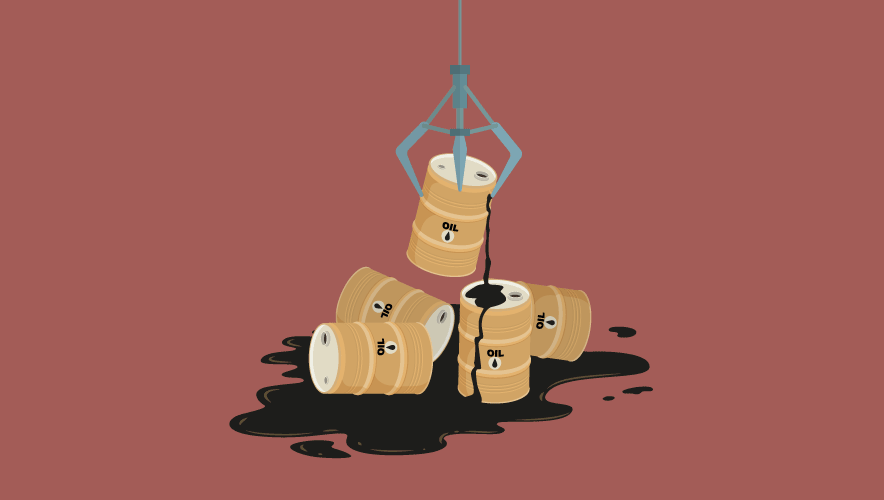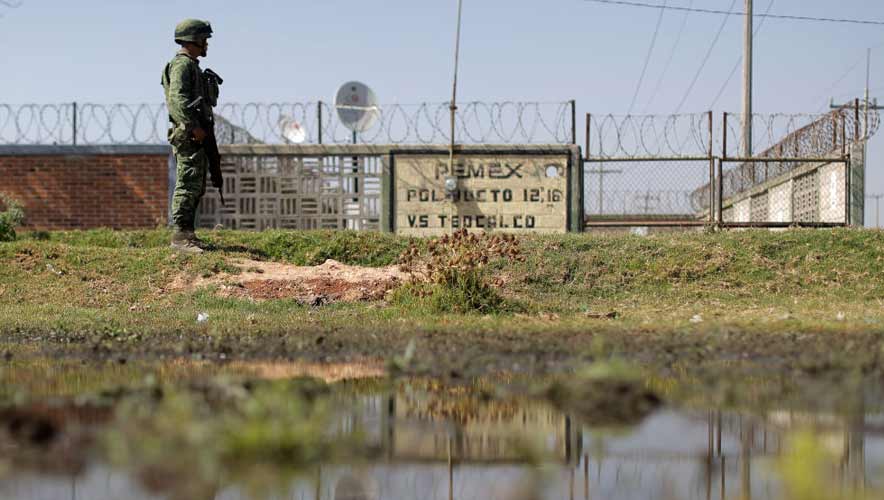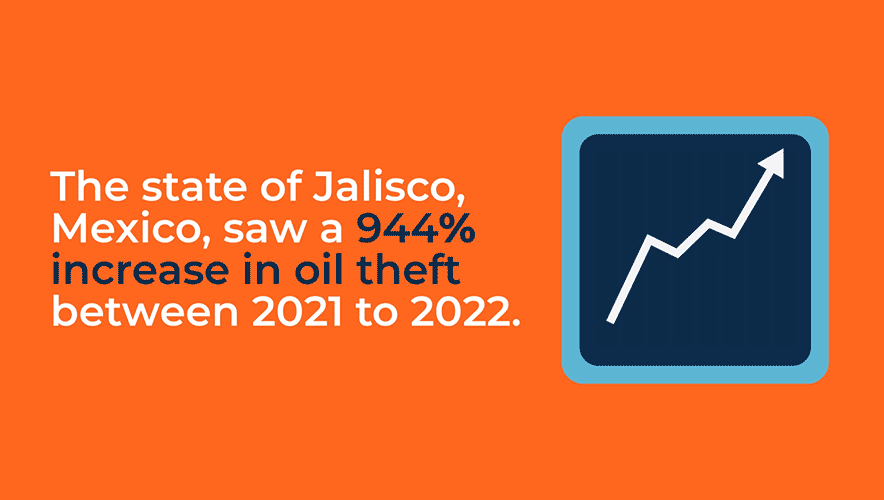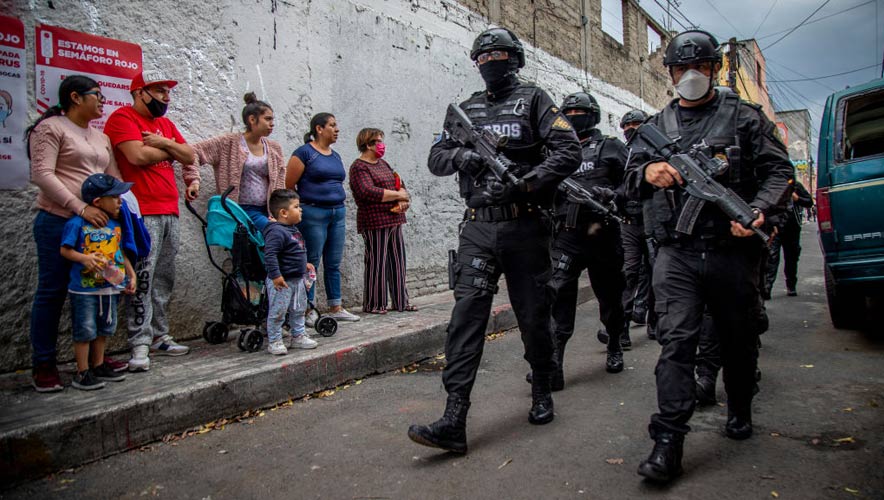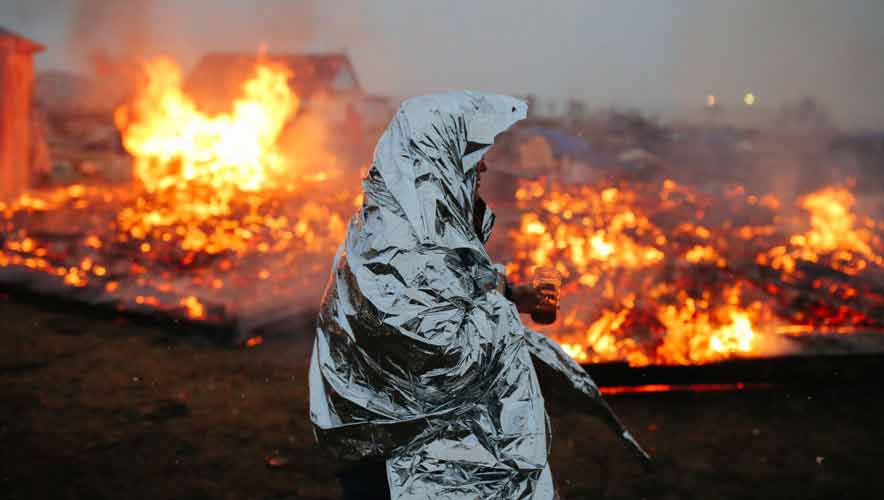Seeking Revenue, Cartels Turn on the Fuel Tap
Oil thefts in Mexico are old news, especially along the 3,000 miles of pipeline that stretch across the country. Such thefts are often facilitated with illicit taps along a line. These taps are not dissimilar in appearance to water hose spigots, sometimes crudely inserted and welded into a pipeline by fuel thieves, who are also called huachicoleros.
“The whole huachicolero phenomenon, it’s been in play for a long time in Mexico,” explains Gladys McCormick, associate professor of history at Syracuse University.
Other academics have noted that until the 2010s, this kind of theft was executed “in a rudimentary way,” according to a February 2023 article “Oil Theft, Energy Security, and Energy Transition in Mexico” in the journal Resources.
However, what was once a relatively local and contained crime—an estimated 200 illegal taps a year was considered a peak prior to 2007—is now another prevalent revenue source for organized crime groups in Mexico, booming to an estimated 15,000 taps in 2018. Beyond oil, these thieves also target gasoline and liquefied natural gas.
In the last 15 years, this kind of theft became much more organized and sophisticated as organized criminal networks have increasingly initiated fuel thefts, according to McCormick, who is also a senior associate for the Center for Strategic and International Studies (CSIS). With the ability to leverage massive funds and paramilitaries, criminal cartels can acquire information about pipeline paths, valves, and other infrastructure.
Prior to the mid-2010s, Mexican cartels significantly relied on the production, refinement, transportation, or sale of illegal narcotics as a major source of revenue. But between the onset of the government’s war on drugs, a U.S. customer base that was exponentially turning toward synthetic opioids, and more nations and jurisdictions either legalizing or decriminalizing narcotics, hallucinogens, or other previously illicit substances, drugs were becoming less profitable as a single-stream earner for a criminal enterprise.
And the long-established presence of oil thefts in the country seems to have inspired others who were looking for a new source of income.
“As there is a high demand for oil on the black market, cartels have been gaining a foothold in Mexico’s oil theft business as a way to diversify their revenue sources beyond the drug trade,” according to the Institute for Economics & Peace’s Mexico Peace Index 2023.
Whether it’s locals or officials turning a blind eye to the activities or providing some form of support in exchange for financial profit or an attempt to avoid follow-through on a threat, fuel thieves have found sufficient support to turn a profit by turning on the tap.
“The number of illegal taps in Mexico increased from around 200 per year before 2007 to 3,000 in 2013, peaking at 15,000 in 2018. Illicit pipeline tapping accounts for most of Mexico’s oil theft,” wrote Vlado Vivoda, Ghaelb Krame, and Martin Spraggon—authors of the Resources article.
And those taps can be volatile—sometimes with fatal consequences.
In January 2019, an explosion due to an illegal tap on a gas pipeline in Hidalgo, Mexico, killed at least 73 people and injured another 74. In December 2022, another fuel line explosion in Hidalgo killed at least one employee from Petróleos Mexicanos (Pemex)—the nation’s state-owned and -run petroleum company. In early May 2023, seven people were injured when a Pemex oil pipeline exploded—presumably due to an illegal tap—in the state of Mexico, Mexico.
Hidalgo, which is home to Mexico’s busiest refinery, has the highest rate of oil theft in the nation, according to the report from the Institute for Economics & Peace (IEP).
These thefts and explosions cost Pemex an estimated $1.6 billion a year in losses, a significant impact on the country as a whole since Pemex accounts for more than 15 percent of Mexico’s export revenues.
But with sophisticated technology and industry expertise to enable large-scale pipeline tapping, these groups have shifted away from black markets into more nebulous territory.
“Certainly, the Gulf Cartel, to a certain extent, too, the Sinaloa Federation and Jalisco New Generation Cartel, have moved into the gray markets,” says McCormick. Other groups involved previously or currently in fuel thefts include the Santa Rosa de Lima cartel and Los Zetas, which split into several factions after prolonged infighting that began in the 2010s.
Within this gray market, buyers—such as gas station operators—are purchasing supplies at a significant discount compared to legal markets. This is particularly tempting in Mexico, where gasoline prices have notably increased. Average gasoline prices in 2018 were Mex$16.80 (USD $0.97) per liter; they climbed to Mex$19.47 (USD $1.12) by the end of 2022, according to the Ministry of Finance and Public Credit.
Dancing just outside of black-market dealings, the provenance of supplies reaching the gray market is not readily evident, and in fact, “it kind of has that veneer of legality as long as you don’t ask too many questions,” notes McCormick. The gray market also allows Mexican criminal cartels to approach buyers in the United States.
A portion of stolen fuels are earmarked as fuel for other cartel activities, including for ships the organization uses to export illegal narcotics, as reported by El Universal.
The range of activity—from locating and tapping into the lines to transporting to using and selling the stolen fuel—allows criminal organizations to have a presence in both legal and illegal realms. This makes it difficult for law enforcement to pinpoint where illegal activities start and stop.
The current Mexican government has worked on tackling these thefts. Early on in his term, President Andrés Manuel López Obrador moved against these activities, sending in military forces to support Pemex facilities. Unfortunately, these efforts also interrupted operations. The resulting gas shortages led to long lines at gas stations and likely pushed more buyers towards the gray market.
In early 2019, López Obrador claimed that his efforts resulted in the elimination of nearly all fuel thefts in the country. However, while this victory seems to have shut down the more traditional and smaller-scale huachicoleros, it appears short-lived over cartel activities, according to news reports.
The president knuckled down on the thefts, but specifically “the informal, more community-based, local, small entities of criminal organizations. The little dogs. Not the medium-sized and the large-scale transnational criminal organizations,” McCormick says.
With other stresses on the fuel market driving up prices, including the sanctions against Russia resulting from the Russia-Ukraine war, both buyers and sellers know to look at the black and gray markets for financial relief. The number of illicit taps dropped between 2019 and 2020 from 14,405 to 11,022, and the number of taps stayed relatively steady in 2021, only climbing to 11,037. But in the first eight months of 2022, Pemex reported a 27 percent increase in illegal taps compared to the same period from the previous year.
To meet the growing demand, thieves “are becoming increasingly ingenious and brazen in their attempts to avoid detection while stealing ever greater quantities of oil and derivative products. This has seen huachicoleros resort to using underground tunnels to avoid detection and siphon fuel from illicit taps on pipelines to concealed warehouses,” according to energy news site Oilprice.com.
Aboveground or underground, thieves still require access to a valve along a pipeline. With the resources and dedication to commit to targeting a pipeline, organized huachicoleros can learn a pipeline’s route in advance and approach a line that has already been constructed but is not yet operational. After cutting into the pipe, a valve stem is welded onto the opening so that once the pipeline comes online and the thief has access to the valve, it is turned on and allows for fuel to be siphoned off.
One set of illegal taps was recently found in an underground tunnel in Hidalgo in May 2023. Law enforcement found that the tunnel, which stretched for 25 yards, housed fuel cisterns and illegal taps into government pipelines. At the time of the raid, there was approximately 10,000 gallons of stolen fuel kept in a space with poor ventilation, according to news reports.
But raids may only be a stop-gap measure for the issue. “Even if the racket is curbed, persistent official corruption and collusion will keep letting criminal groups turn to alternative revenue sources, making an approach that addresses the sources of violence in a lasting fashion all the more important,” according to a March 2022 Crisis Group Latin America Briefing.
Whether cartels are splintering into new factions or diversifying their rackets, “the control of local territory becomes increasingly important. This puts mayors and other local officials in the cross fire. Many local leaders are victims of extortion themselves; they pay local gangs off out of municipal coffers to guarantee their own and their community’s protection,” noted Mary Speck, a senior associate with the Americas Program at CSIS, in a 2019 report for PRISM.
Cartel members recruit or extort not only officials in law enforcement and government, but they also target pipeline and industry employees or third-party contractors to supply valuable information about pipelines or even installing illegal taps in challenging areas.
It can be difficult for organizations or executives new to working in the region to adjust to the necessary sense of suspicion and distrust—even towards law enforcement, says Brian Lynch, executive director of safety and security for the Rane Network.
“You have to go into the market initially with the perspective that you really can’t trust anybody,” Lynch advises. “Whether that’s a supplier or a customer or your competitor or anybody that you’re dealing with—you really have to look at it with a jaundiced view.”
Instead, Lynch recommends verifying a person’s intentions before trusting that person. Lynch’s background lies in consulting and executive protection, having supported clients dealing with security issues in Mexico for roughly 10 years. Prior to working for Rane, Lynch was the head of security for the Mexico City offices of a major financial firm.
The scope of corruption within Pemex remains a debated and clouded issue, according to a 2019 edition of the Journal of Strategic Security, which also noted the corruption scandal of former Pemex CEO Emilio Lozoya Austin. The allegations against and detention of Lozoya Austin “provides a glimpse of the corrupt potentials weakening Pemex’s internal operations and public legitimacy,” the journal said.
“We’re not saying that everybody that we deal with in Mexico is corrupt,” Lynch says. “What we’re saying is if there’s an organized group or cartel that wants something from a company that is doing business there, they will put the pressure on Mexican nationals to get that done.” Usually, this is accomplished by using a company insider, whether with money or by threatening the employee or his or her family.
Lynch recommends that, when possible, multinational organizations operating in the area hire personnel or contractors from the United States.
Beyond fuel, criminal cartels are also eyeing other utilities, notably lithium and water. This additional diversification and involvement with the gray market—and subsequently the likely involvement of foreign corporations also benefitting from these thefts—make it increasingly difficult to determine who and how to prosecute involved parties, according to McCormick.
However, the fallout from competition over these resources is likely to echo the violence driven by rivalries over regional pipelines.
Since 2017, the Santa Rosa de Lima cartel began challenging the Jalisco New Generation cartel’s dominance of fuel theft in the state of Guanajuato, Mexico, “which has driven extreme levels of homicide and firearms crime, as well as significant increases in the rates of extortion, major offenses, and retail drug crimes,” according to the Mexico Peace Index 2022.
And for any kind of utility or facility that may be targeted by organized crime in the region, Lynch notes that the key to mitigating threats and thefts is by understanding the threat landscape and then developing and implementing multiple forms of security, from physical to surveillance to internal threat monitoring.
“I think if you just do physical security, you’re missing the other points. If you just do security around personnel or hiring, you’re missing out on the other points. I think it’s all encompassing, and it’s a puzzle that you have to put together,” Lynch says.
Sara Mosqueda is associate editor for Security Management. You can follow her on Twitter @XimenaWrites, or connect with her on LinkedIn.
